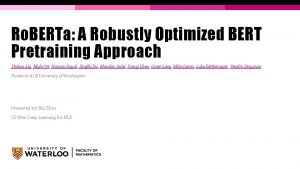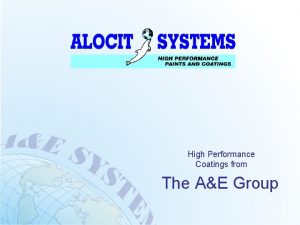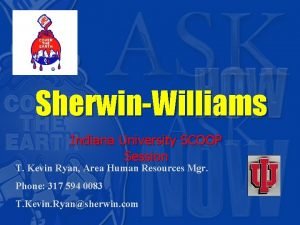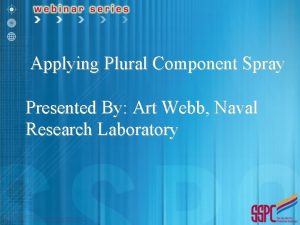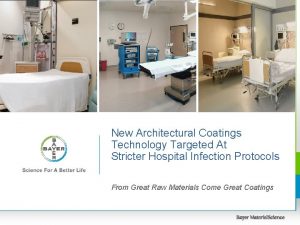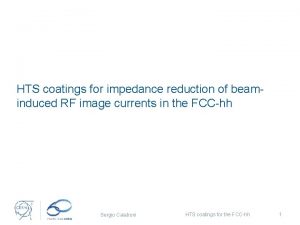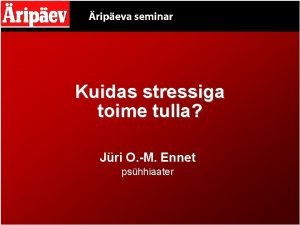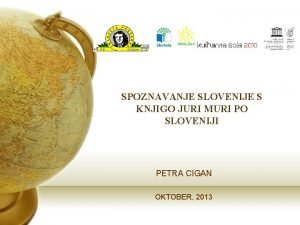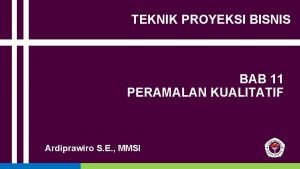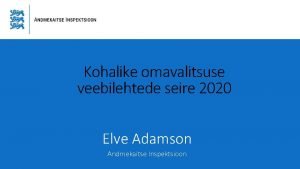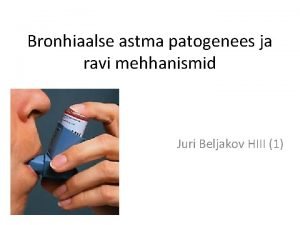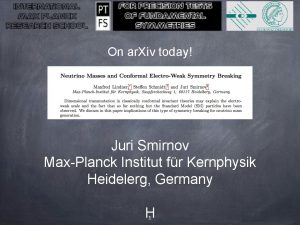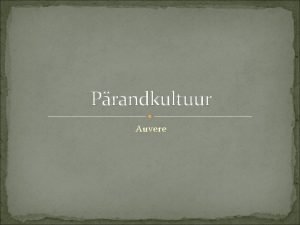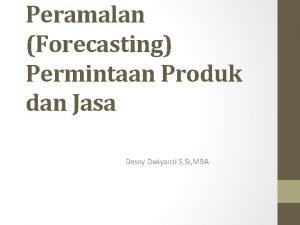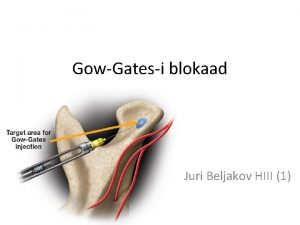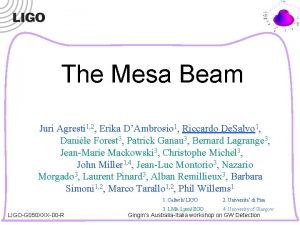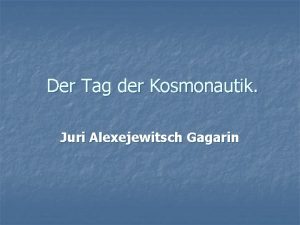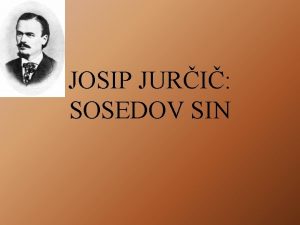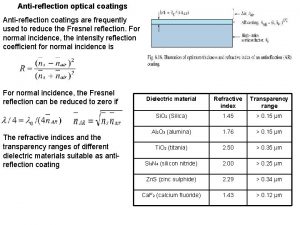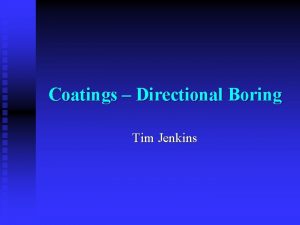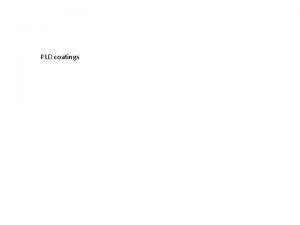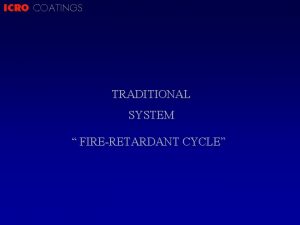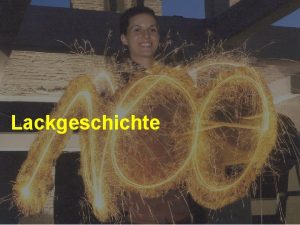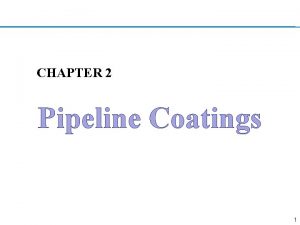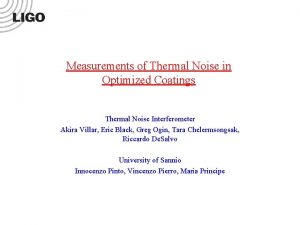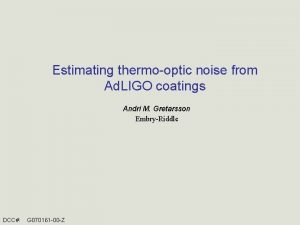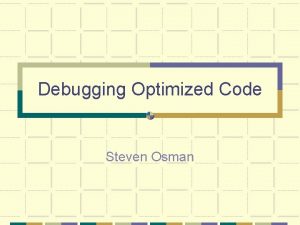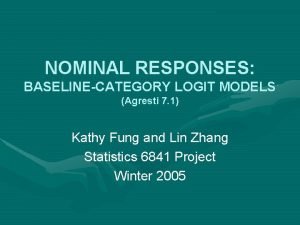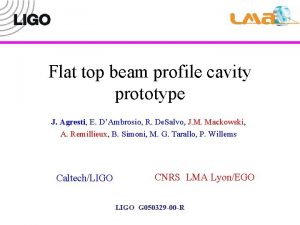LIGO G050363 00 R OPTIMIZED COATINGS Juri Agresti




















- Slides: 20

LIGO G-050363 -00 -R OPTIMIZED COATINGS Juri Agresti, Giuseppe Castaldi, Riccardo de Salvo, Vincenzo Galdi, Vincenzo Pierro, Innocenzo M. Pinto * LIGO Lab / Caltech TWG / University of Sannio at Benevento The Waves Group 12 -17 August 2005, LIGO Hanford Observatory

LIGO G-050363 -00 -R Rationale • Current mirror design: quarter-wavelength (QWL) alternating Si. O 2 and Ta 2 O 5 layers. • Yields largest reflectance among all stacked-doublet designs for any fixed no. of layers (or equivalently, smallest no. of layers at any fixed reflectance). • Coating (structural) noise dominates thermal-noise budget in key spectral range. • QWL coating does not yield mimimum noise for a prescribed reflectivity, hence not optimal. 12 -17 August 2005, LIGO Hanford Observatory

Coating Design Optimization: LIGO G-050363 -00 -R Status & Work Plan (2005 -2006) Genetic optimization (running) The choice, for highest design flexibility and insight; • Status/Directions Stacked-doublet (completed) Most obvious generalization of stacked quarter wavelength; Regular non-periodic (just started) getting closer to the “perfect mirror”; • On top of this: new materials (e. g. , JMM Ti. O 2 -doped Tantala) 12 -17 August 2005, LIGO Hanford Observatory

LIGO G-050363 -00 -R Funding Proposal INFN – COAT (2006 - PI Innocenzo M. Pinto) Goal: prototyping four GA-optimized mirrors to be tested at CALTECH TNI. Time-span: 1 year (2006). Participants: TWG (algorithm and code), CALTECH LIGO-Lab (substrates & TNI), LMA Lyon, FR (prototyping; bare costs). Partnerships: ILIAS-Strega (S. Rowan/J. Hough), TAMA (Tsubono K. ), VIRGO (F. Vetrano). Requested budget: 50 KEU (60 K$). 12 -17 August 2005, LIGO Hanford Observatory

LIGO G-050363 -00 -R • Nice Features Genetic Optimization Multiple, heterogeneous mixed continuous/discrete constraints; Multi-objective and/or best tradeoff optimization; Robust. -structural/rheology-related constraints; Available options include: -multiple-wavelength operation; -several (> 2) materials, etc. … Educated ignorance attitude (almost no a-priori assumption on structure of sought solution - will shed light on it !); Effective & well established (e. g. microwave antenna and filter design)… Status: PIKAIA-based Code-kernel developed. 12 -17 August 2005, LIGO Hanford Observatory

Genetic Algos in a Nutshell LIGO G-050363 -00 -R -Problem unknowns genes; -Point in search space chromosome; -Set of points in search space population; -Evolve random initial population according to an evolutionary schedule s Crossover + Mutation 12 -17 August 2005, LIGO Hanford Observatory

Stacked Doublet Optimization LIGO G-050363 -00 -R Most obvious generalization of current stacked- /4 -design. • Coating reflectivity is a monotonic (increasing) function of Bloch characteristic exponent (BCE) of transmission matrix of basic doublet (true for any truncated-periodic); • Coating noise is closely modeled by a simple (linear) law: total (physical) thicknesses C Tantala+ -1 Silica related to Young moduli, Poisson ratios & loss angles of both substrate & coating materials. In view of present measurement uncertainties can be anything between 10 and 30. 12 -17 August 2005, LIGO Hanford Observatory

LIGO G-050363 -00 -R Stacked Doublet Optimization z. S = optical length Si. O 2 layer z. T = optical length Ta 2 O 5 layer In units of 0 0. 5 Increasing doublet noise 0. 4 zz. TT 0. 3 0. 2 0. 1 0 z. S+z. T=1/2 0 0. 1 0. 2 0. 3 zz. SS 0. 4 0. 5 12 -17 August 2005, LIGO Hanford Observatory

LIGO G-050363 -00 -R Stacked Doublet Optimization: Approximation # 1 BCE contour lines very thin: no sensible difference between exact and approximate (z. T+z. S=1/2) optimization 12 -17 August 2005, LIGO Hanford Observatory

LIGO G-050363 -00 -R Stacked Doublet Optimization: Approximation # 2 …both absorbed by large by uncertainty in 12 -17 August 2005, LIGO Hanford Observatory

Constructing Tradeoff Curves LIGO G-050363 -00 -R -Assign number N of doublets; -Assign noise upper-bound noise for whole coating; -Compute corresponding upper-bound for single doublet; -Determine z. S and z. T so as to maximize BCE; under tha above noise constraint; -Compute terminated N-doublet reflection coefficient. 12 -17 August 2005, LIGO Hanford Observatory

Stacked Doublet Optimization LIGO G-050363 -00 -R Each point on any curve corresponds to a z. T/z. S value. 8. 3 ppm =10 #d ou ble ts Noise Status: Transmissivity vs. Noise Tradeoff Curves Drawn 12 -17 August 2005, LIGO Hanford Observatory

LIGO G-050363 -00 -R Stacked Doublet Optimization z. T / z. S Noise Noie (arbitrary units) 2. 7 2. 6 2. 5 2. 4 18. 3 ppm |2 | QS QT 10 ± 3%errorbar Current LIGO design z. S +z. T 1 2 circles Unconstrained bullets Tantala noise Silica noise 2. 3 optimum 2. 2 19 20 21 22 23 24 25 26 27 28 29 30 Numberof doublets 12 -17 August 2005, LIGO Hanford Observatory

Quarter Wavelength (yellow bullets) vs. Optimized (grey bullets) Stacked Doublet Design. Transmissivity 8. 3 ppm. Different Si. O 2/Ta 2 O 5 loss ratios. LIGO G-050363 -00 -R 2. 8 1 -| | 8. 3 ppm =30 8. 3 ppm 1 -| | 2. 7 =10 Noise Arbitrary units 2 2. 6 2. 5 2. 4 2. 2 2 2. 3 1. 8 2. 2 40 45 50 55 numberof layers 60 ~14% noise reduction. Nd raised from 19 to 22 -24 (absolute optimum at 23) [Si. O 2]= 249. 583 nm [Ta 2 O 5]= 80. 8843 nm 40 45 50 55 60 numberof layers 65 70 ~24% noise reduction. Nd raised from 19 to 25 (absolute optimum at 29) [Si. O 2]= 280. 216 nm [Ta 2 O 5]= 59. 3664 nm

Quarter Wavelength (yellow bullets) vs. Optimized (grey bullets) Stacked Doublet Design. Transmissivity 1. 12 ppm. Different Si. O 2/Ta 2 O 5 loss ratios. LIGO G-050363 -00 -R 2. 8 2 3 1. 12 ppm 1 -| | Noise Arbitrary units 3. 1 =10 2. 9 2. 8 1 -| | 1. 12 ppm =30 2. 4 2. 2 2 2. 7 2. 6 2 2. 6 1. 8 40 45 50 55 numberof layers 60 40 45 50 55 60 numberof layers 65 70 ~14% noise reduction. Nd raised from 22 to 25 -28 (absolute optimum at 27) ~24% noise reduction. Nd raised from 22 to 28 (absolute optimum at 33) [Si. O 2]= 251. 871 nm [Ta 2 O 5]= 60. 5726 nm [Si. O 2]= 278. 465 nm [Ta 2 O 5]= 60. 5726 nm

LIGO G-050363 -00 -R GA Engineered Prototype 5 (after 10 generations) Goal: 1 -| |2 < 15 ppm. L[Ta 2 O 5] < 2000 nm, =. Ta 2 O 5 layer# 2 4 6 8 10 12 14 16 18 20 22 24 26 28 30 32 34 36 38 40 42 44 thickness [nm] 250 200 150 100 50 0 1 3 5 7 9 11 13 15 17 19 21 23 25 27 29 31 33 35 37 39 41 43 Si. O 2 layer# 12 -17 August 2005, LIGO Hanford Observatory

GA Prototype, contd. LIGO G-050363 -00 -R vs. nearest-neighbour quarter-wavelengths (QWL) QWL-1 Genetic QWL-2 N (cap included) 36 44 28 1 -| |2 ppm 16. 20 14. 91 235. 46 L(Ta 2 O 5) nm 2359. 43 1815. 61 1835. 11 L(Si. O 2) nm 3479. 98 5217. 4 2747. 35 Ltot 5839. 41 7033. 01 4582. 46 nm 12 -17 August 2005, LIGO Hanford Observatory

Stacked Doublets: Lesson from GA: Tweak End Layers to Improve Reflectivity ! LIGO G-050363 -00 -R 1 -| |2 z. N z 1 (z 1 = 0. 0943, z. N =0. 0437, in units of ) reflectance increased by ~ 10%, noise increased by ~ 1% 12 -17 August 2005, LIGO Hanford Observatory

GA Prototype Characterization LIGO G-050363 -00 -R 18 Mirror frequency response (normal incidence). 16 15 14 1. 75 13 1. 5 12 1030 1040 1050 0 nm 1060 Distribution of 1 -| |2. Random uniform errors, 104 trials. 1. 25 1070 PDF 1 - 2 106 17 1 0. 75 = 14. 94 ppm 3 = 0. 64 ppm 0. 5 0. 25 0 14. 4 14. 6 14. 8 15 15. 2 2 6 1 - 10 12 -17 August 2005, LIGO Hanford Observatory 15. 4 15. 6

Regular Non-Periodic Coatings LIGO G-050363 -00 -R Fractal (e. g. , Cantor); Two main sub-classes: Substitutional (e. g. Fibonacci); Goal: large bandwidths (in frequency and wavenumber) [e. g. , Optics Lett. 23 (1998) 1573]; Background: applications in antenna array synthesis [e. g. , IEEE Trans. AP-53 (2005) 635] Status: just started 12 -17 August 2005, LIGO Hanford Observatory
 Roberta: a robustly optimized bert pretraining approach
Roberta: a robustly optimized bert pretraining approach Wioa optimized system
Wioa optimized system Markskill llc
Markskill llc Pinnacle coatings group
Pinnacle coatings group Sherwin williams chemical coatings store
Sherwin williams chemical coatings store Plural component spray coatings
Plural component spray coatings Powder coating kildare
Powder coating kildare Hospital wall coatings
Hospital wall coatings Alpit metal works
Alpit metal works Hts coatings
Hts coatings St powder coatings
St powder coatings Jüri ennet
Jüri ennet Juri muri po sloveniji
Juri muri po sloveniji Metode juri opini eksekutif
Metode juri opini eksekutif Jüri juurikas
Jüri juurikas Juri beljakov
Juri beljakov Juri smirnov
Juri smirnov Juri hofmann
Juri hofmann Jüri mõis
Jüri mõis Contoh peramalan permintaan dalam perusahaan
Contoh peramalan permintaan dalam perusahaan Juri beljakov
Juri beljakov
